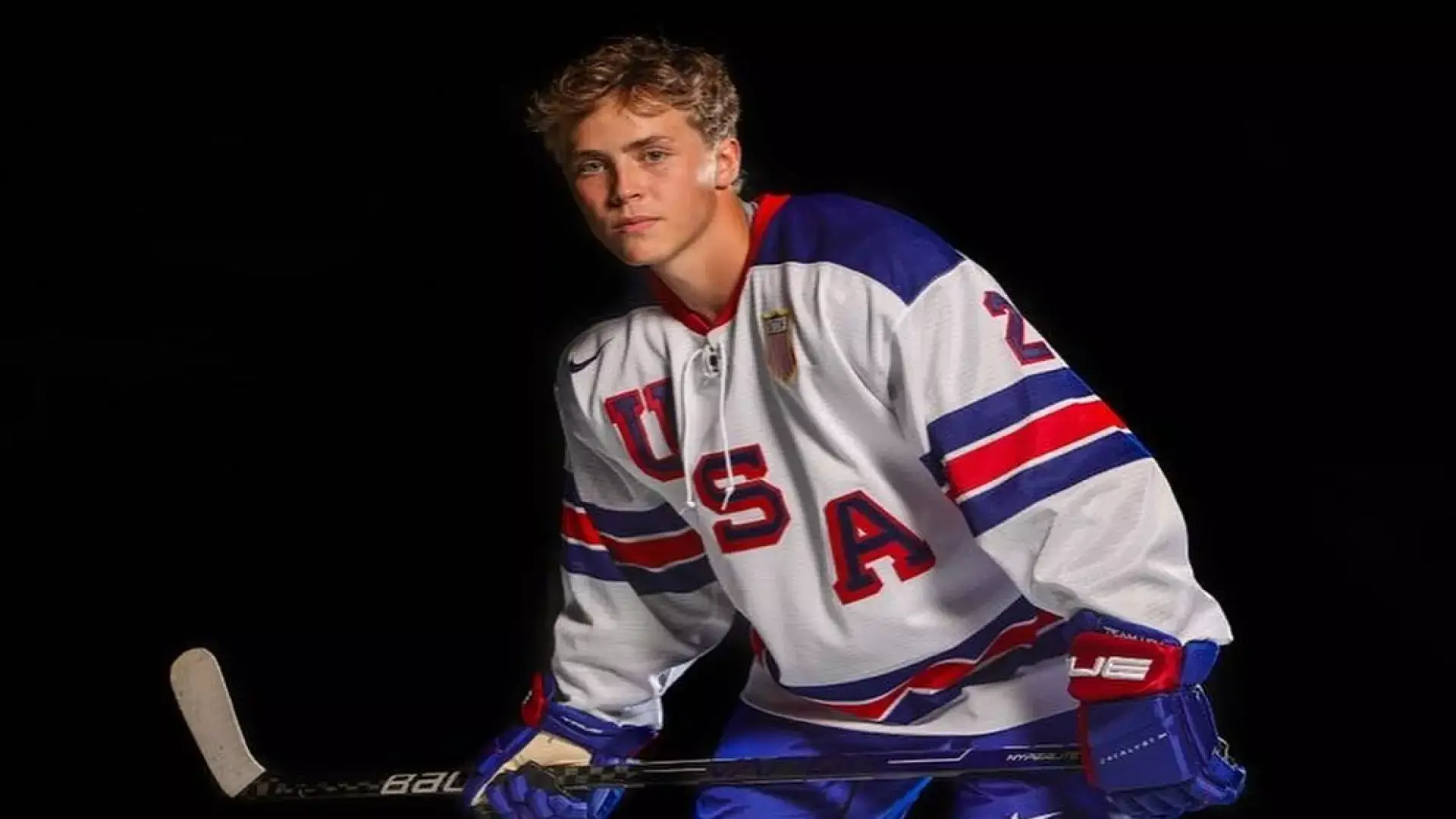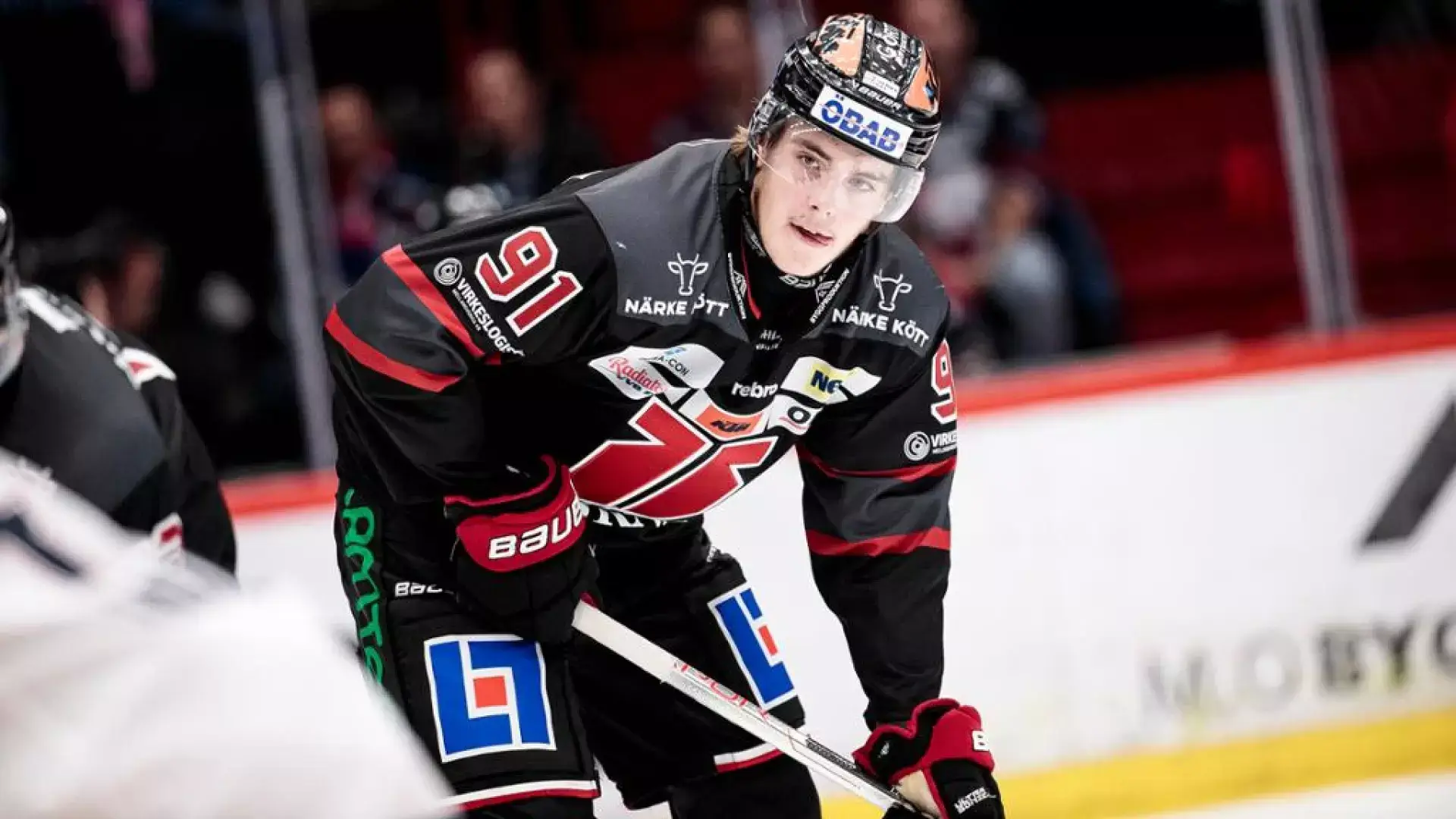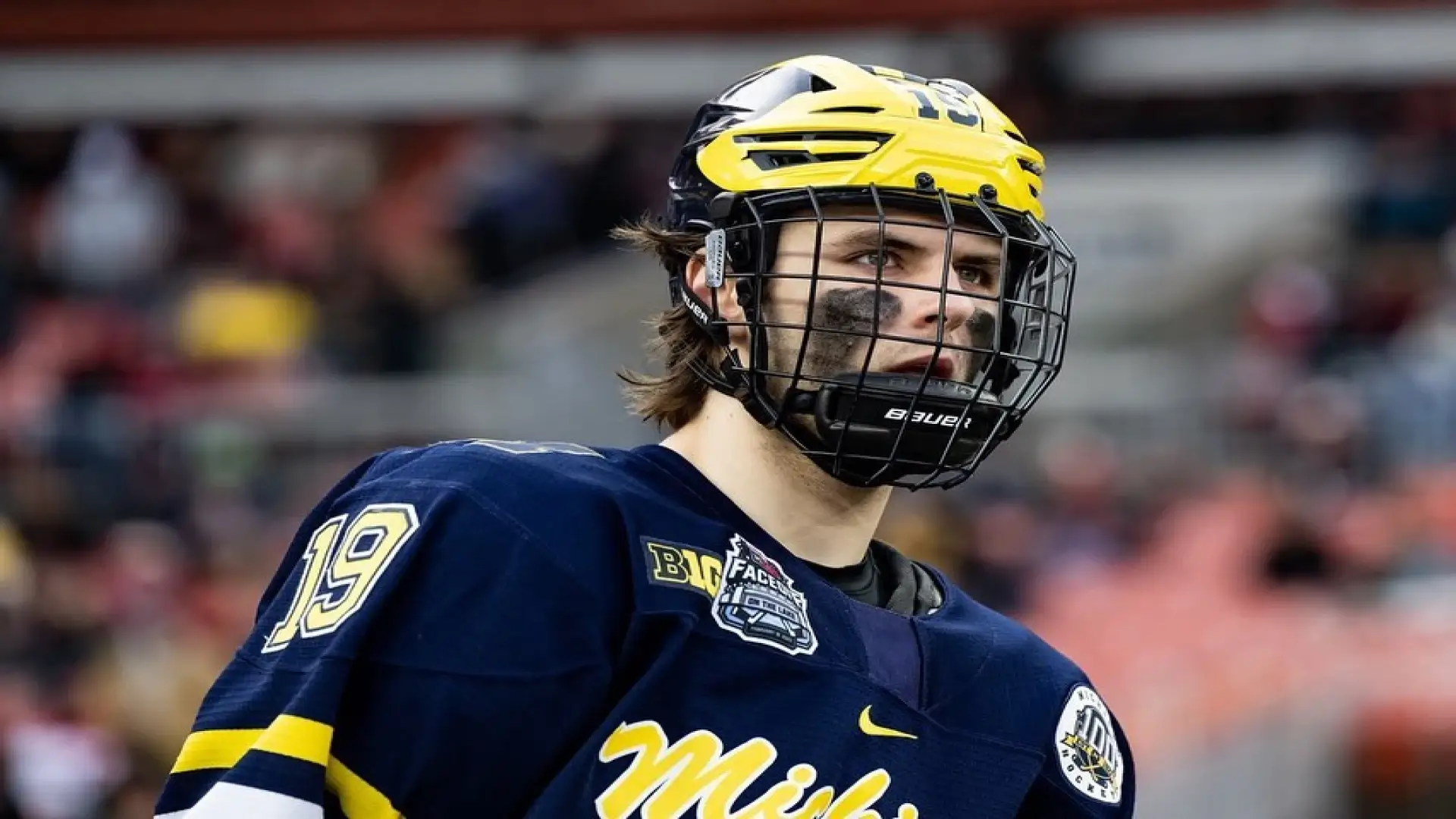Every team has a strategy to create offense in hockey. When trying to get the puck into the offensive zone, a team has two options: carry the puck into the zone or shoot the puck in and try to retrieve it.
A team would like to carry the puck into the zone, but the defense makes this difficult and forces them to shoot the puck in. This is where the forecheck comes in.
So what is forechecking in the NHL? The forecheck is an ice hockey defensive play made in the offensive zone with the objective of applying pressure to the opposing team to regain control of the puck
There are a number of forechecking systems that a hockey team could use or will use during the course of the game. It is important for a team to mount pressure and create disruption in the offensive zone against opponents.
This will help them create turnovers and possession time with the puck. Of course, it is hard to score goals if you cannot get the puck!
What are some of the forechecking systems a team will use?
The system that is implemented in the game will depend primarily on three things:
- The coach’s philosophy
- The players on the team and their skills and abilities
- The situation of the game
Coach’s Philosophy:
Each coach has his own idea of what it takes to win a hockey and the systems needed to make that happen. There are definitely different camps, as some are more conservative and some more aggressive.
The forecheck can be implemented in a conservative way that involves players hanging back. Or, it can be implemented in a more aggressive way that involves a lot of pressure.
Whichever system is chosen (whether conservative or aggressive) has a lot to do with the actual coach’s philosophy about what it takes to win a game.
Players’ skills and abilities
In choosing a forechecking system and philosophy the coach will take into consideration the players that he is given to work with.
Are the players on the team fast and great skaters? This would cause a coach to choose a more aggressive fast skating system.
Do the players on the team have great size and physical play? This may lead a coach to choose a more conservative style that relies less on speed and more on boxing players out.
The situation of the game
It is important that a team learn to master one style of forecheck. However, there will be times or situations in a game when it is advantageous to switch your style of forecheck.
Would a team apply a conservative forecheck when they are down a goal with 5 minutes to play? Of course not! The team will want to play aggressive in order to try and get chances to score to tie up the game.
Or conversely, does a team want to be really aggressive when trying to protect a lead at the end of the game? No, they will choose to play a more conservative style that decreases the number of chances against.
Standard Triangle:
Objective: This is a system where the players will be in a triangle with one player in on the puck, while the second is a support system and the third can move to the slot for a scoring chance or drop back to a defensive position as needed.
Players: This is a great system to be implemented by younger players or at the start of a season, as a team comes together. It is straightforward and easy to teach. It will teach the players basic checking, how to read and react to plays.
Key Points
- Easy to teach and requires basic checking skill
- Stresses pressuring the puck carrier
- Forwards learn how to work together
- Prevents the opposition from breaking out 3-on-2
1 – 2 – 2
Objective: The 1-2-2 is a conservative system that will usually have the center force the puck while the wingers stay on the side boards. This encourages the defensive team’s defensemen to carry the puck out and prevent the forwards from getting 3-on-2s.
Players: This is a great system to play if the team has big wingers, as it will enable the team to control the play along the boards. It is also fairly simple to teach, and most teams will run into situations that call for a 1-2-2.
Key Points
- Adaptable to most breakout plays from the opposition
- Balanced between the positions with no one being key
- Essential for the wingers to control the boards
- Stresses positional play while only needing basic adjustments
1 – 4
Objective: The 1-4 is maybe the most conservative type of forechecking system applied. The team will send only one forward into the offensive zone – usually the centre. The other two forwards will drop back and play like defensemen. This system has also been known as the neutral zone trap.
Players: This is a system that is often employed by teams with a lack of talented and skilled players. It is employed by a team with less talent trying to stop a more talented team. As well, it will often be used at the end of games to try and protect a lead.
Key Points
- Does not stress pressuring and simply gives up the offensive zone
- Two forwards and defence will create a type of wall that is difficult to penetrate
- Four players are tasked with more territorial responsibility
- Always four players to defend against three forwards
- Forecheck that creates opportunities by turnovers in the neutral zone with quick counterattacks
1 – 1- 3 Off Wing Stay back (Sometimes called Left-Wing Lock)
Objective: This is a forecheck that offers a combination of aggressiveness with conservatism. The Centre and the winger on the side of the puck will aggressively attack the puck in the opposition zone.
The winger on the offside of the puck will stay back and act as a third defenseman with the ability to jump deeper into the offensive zone if possession is gained.
In a variation of the system, the left-wing will be given the task of staying back closer to the defensemen. They will act as a rover type of defensemen who can come up if necessary, but their first responsibility is towards defensive awareness.
Players: This is a great system for teams that can skate well. Hence, the players have to get in deep to quickly attack the opposition, and the third forward will be able to skate into the slot if an opportunity arises.
Key Points
- Allows innovation from forwards on counterattacks
- Prevents 3-on-2s from the opposition
- Relies on skating from forwards
- Can be tweaked to implement a more rigid left-wing lock
2 -1- 2
Objective: This is an extremely aggressive forechecking system that was brought in by the Soviet Union during the 1980s. They would send in 2 forwards to forecheck one defenseman or winger.
There is constant pressure on the defensive team in the hopes that they will make poor passes and cause turnovers. The defence are also more inclined towards helping the forwards and being aggressive along the boards.
Players: This requires a highly skilled team to pull off. The team must be constantly communicating with each other – especially between the centre and the defence.
The team needs to be great skaters and able to adapt to constantly changing situations and read plays well as they develop.
Key Points
- This system is difficult to learn
- Players will be interchanging positions as they cover each and support each other
- Opposition is to be attacked at all times and in all areas
- The defensemen are more aggressive and will often pinch up along the boards – the forward will need to know when to come back to cover the defensemen.
Aggressive Overload
Objective: This is an extremely aggressive system employed when a team needs to get a goal. The forwards basically have no defensive responsibilities and try to apply constant pressure at all times.
Meanwhile, the defensemen are positioned wider than normal and are encouraged to pinch in on the puck and come forward in the offensive zone.
Players: To implement this strategy, teams will have to be fast with highly skilled players. However, most teams would implement this type of forecheck when they are behind, near the end of the game. At this point, it is worth taking a few risks to get a goal or two!
Key Points
- Forward’s only concern is to pressure puck with no defensive responsibilities
- Defence are looking for opportunities to come into the offensive zone and will take risks
- Forwards will all play deep within the opposition zone
- Used as a strategy to get goals when they desperately need them
3 -2 Press
Objective: This system comes in handy in a few specific situations, such as at a face-off or the end of the period, when it would be unlikely that a team could counterattack to create a scoring chance.
Also, the three forwards will be deep in the zone and pressure the puck to create a turnover. After a turnover, the players will make a quick attack towards the net.
Players: The players implementing this will usually be the team’s best scoring forwards as they will be on during these specific situations. To create this much pressure, a player needs to be a great skater and quick to the puck.
Key Points
- Key strategy is to have three forwards pressure the puck at the same time
- High intensity and quick strategy
- Done in key situations such as at the end of the period
Conclusion
As you watch hockey, try to pick out what system the team is using. As the famous Wayne Gretzky states, “Don’t skate to where the puck is, skate where it is going”.
Knowing the systems will help you know where the puck is going and anticipate what players are trying to do. It will also let you see when a player makes a mistake!
Check Out Some Interesting NHL Facts:
1. What Does AAV Mean In Hockey? (And Why The NHL Use It)
3. What is the Annual Revenue of the NHL? (And where does it come from)
5. Why do hockey players leave their sticks on the ice?





